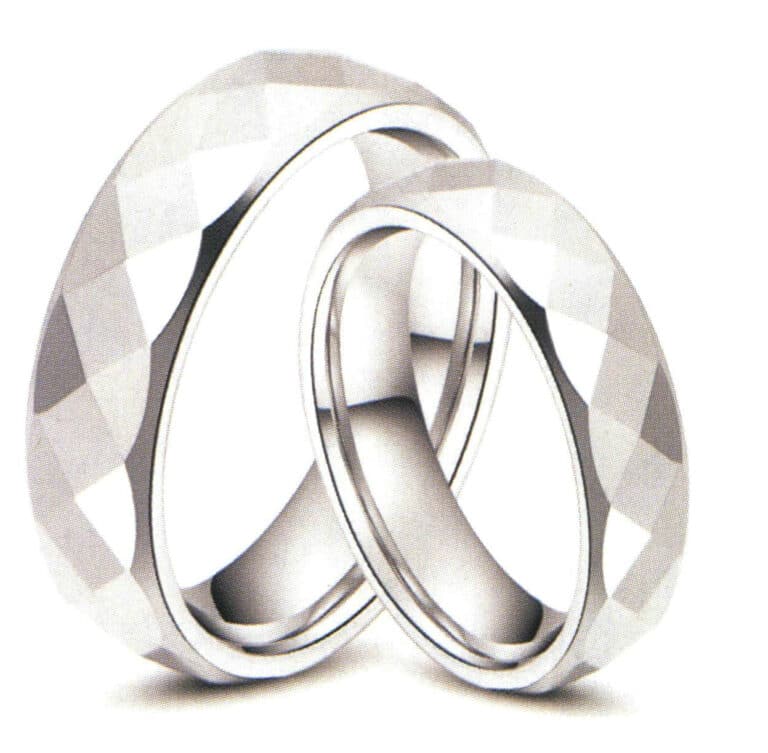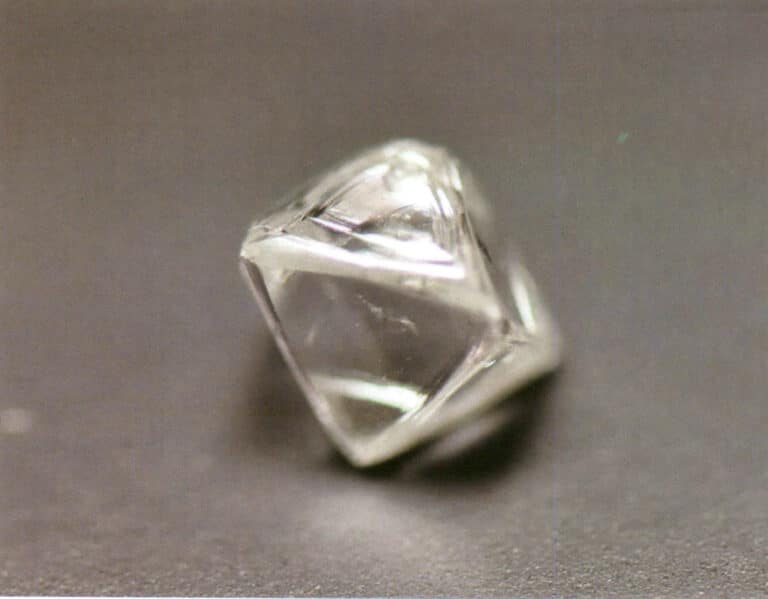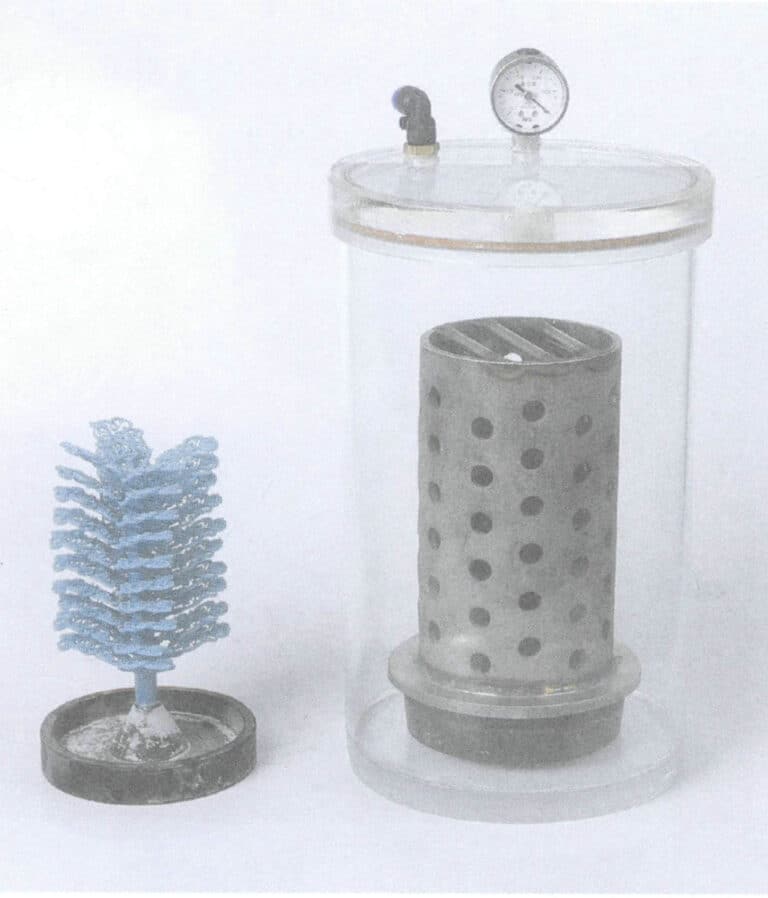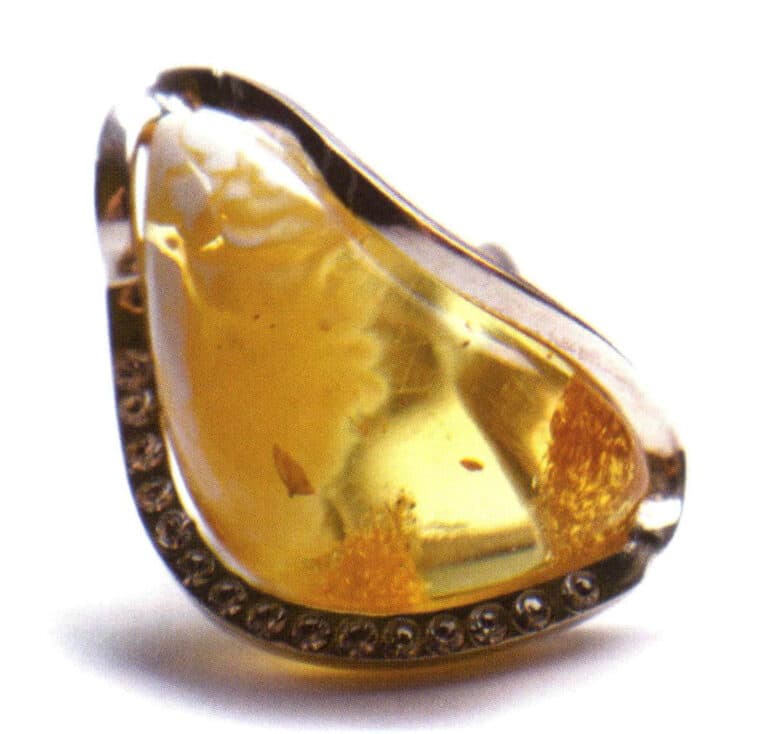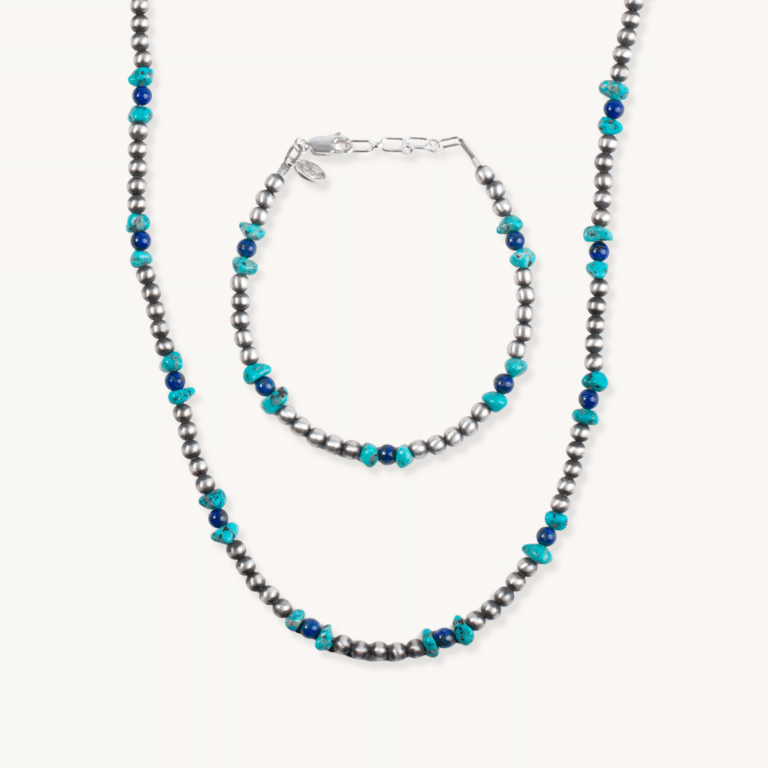Vilka är de viktigaste egenskaperna och skötselmetoderna för populära smyckesmaterial?
Selection and Care of Jewelry Materials
Inledning:
This module mainly introduces common jewelry materials and their care methods, including precious metals, gemstones, and organic gems. Different jewelry materials have different physical and chemical properties, and their care methods in daily wear also vary. By understanding these differences, we can better maintain and care for jewelry.

Pärlor i olika färger
Innehållsförteckning
Section I Precious Metals
1. Gold

Gold Bracelet

Gold Hair Crown
(1) Physical Properties
Gold is yellow and has a low hardness close to that of human fingernails, with a Mohs hardness of 2.5. Density of 19.32g/cm3, melting point of 1064.43℃, good thermal and electrical conductivity, and strong ductility. According to related experimental data, 1 g of pure gold can be drawn into a gold wire 3500 m long and 0.0043 mm in diameter, which is even finer than a hair strand.
(2) Chemical Properties
The chemical element symbol for gold is Au. It has stable chemical properties, is resistant to oxidation and corrosion, is insoluble in strong acids and strong bases, is soluble in a mixture of concentrated nitric acid and hydrochloric acid known as “aqua regia,” and turns white when reacting with mercury.
(3) Classification of Gold Jewelry
The purity of gold products is generally expressed in K numbers, derived from the Greek word Keratin. Gold with a gold content of 1000‰ is 24K. Pure gold is theoretical and currently unattainable with existing technology. The “Regulations and Naming Methods for the Purity of Precious Metals in Jewelry” (GB 11887-2012) stipulate that each K contains gold content of 4.166667%.
9K=100÷24×9=37.5% 14K=100÷24×14=58.333%
18K=100÷24×18=75% 22K=100÷24×22=91.666%
Pure gold: gold content not less than 99.0%, deep yellow, marked as pure gold or 990 gold.
24K Gold: Gold content is not less than 99.9%, also called 24K gold, which is marked on jewelry as “24K Gold” or “999 Gold.”
3D Hard Gold: Purity of 99.9%, which is 24K gold, but different from ordinary 24K gold. 3D Hard Gold uses a new processing technology that enhances hardness and wear resistance by altering the metal structure, changing gold’s soft and easily deformed characteristics. Its shapes are mostly three-dimensional; hence, we call it 3D Hard Gold.
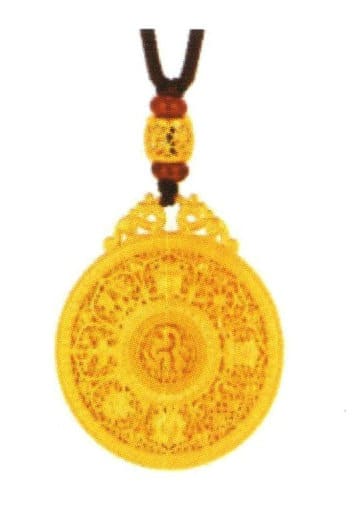
Pure gold pendant
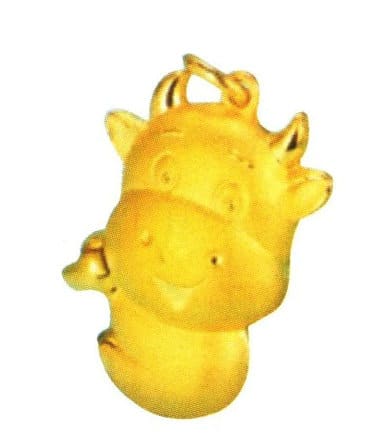
Pure gold pendant
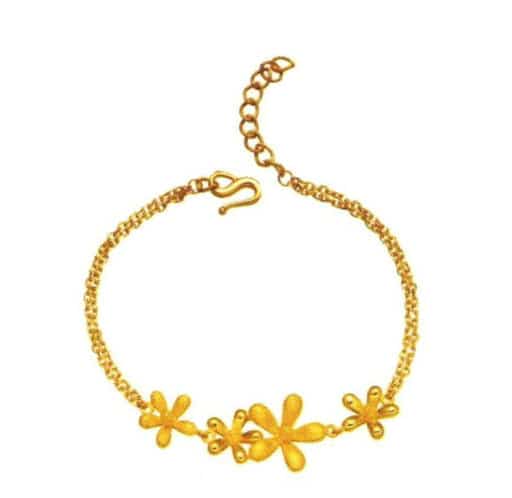
Pure gold bracelet
18K Gold is made by alloying 75% gold with 25% silver, copper, and other metals (fillers). It is marked on jewelry as “Gold 750,” “G18K,” or “Au750.” 18K gold features high hardness, rich colors, diverse styles, and secure gemstone settings commonly used for embedding precious stones. Adding metals to 18K gold results in finished products with various colors.
Copper — color appears pink (rose gold)
Iron — color appears blue
Aluminum — color appears purple
Zinc — color appears light purple
Cadmium and silver — color appears green

Knowledge Link
Since 18K gold is not pure gold or pure platinum but rather plated with a layer of rhodium on K gold or K white gold to enhance its appearance, over time, due to contact with hard objects or scratches during wear, the color of the plating on the surface of the alloy gold will wear off, revealing the original color of the gold, which is often referred to as yellowing or fading. In addition, rose gold is prone to oxidation and requires special care.
(4) Methods for Maintaining Gold Jewelry:
- Gold jewelry can chemically react and discolor when exposed to common substances in daily life, such as perfume, cosmetics, disinfectants, bleach, and seawater. Therefore, remember to remove jewelry when swimming or doing cleaning.
- If the jewelry’s shine dulls due to dust or other stains, it can be cleaned with diluted soapy water and then wiped dry with a soft cloth.
- Avoid mixing different types of jewelry, especially hard gemstones like diamonds, rubies, and sapphires, as they can easily scratch gold jewelry. They should be stored separately in a box.
- If the surface of gold jewelry oxidizes and discolors, it can be cleaned with a solution made from salt, baking soda, and bleaching powder, then wiped dry with a soft cloth.
2. Platinum
(1) Physical and Chemical Properties of Platinum
Platinum has a density of 21.45g/cm3, a Mohs hardness of 4~4.5, and a melting point of 1769℃. It has a silvery-white metallic luster, with a color between silver and nickel, is bright in appearance, and possesses good electrical and thermal conductivity and excellent ductility. Platinum is chemically stable and insoluble in strong acids and bases but can dissolve in “aqua regia.” Platinum jewelry on the market is made by processing platinum together with platinum group metals and does not fade even frequently worn.
(2) Platinum Jewelry
According to the International Platinum Association, jewelry with a platinum content of 850‰ or above can be called platinum jewelry. Platinum is marked with the PT symbol, and platinum jewelry usually carries purity marks such as Pt850, Pt900, Pt950, or Pt990. Therefore, platinum jewelry does not have the so-called 18K or 750 (i.e., purity of 750‰).
Pure Platinum: Platinum content is not less than 990‰ per thousand and is stamped with the “Pure Platinum” or “Pt990” mark.
950 Platinum: The platinum content must not be less than 950‰ per thousand, marked with “Platinum 950” or “Pt950”.
900 Platinum: The platinum content must not be less than 900‰ per thousand, marked with “Platinum 900” or “Pt900”.
850 Platinum: The platinum content must not be less than 850‰ per thousand, marked with “Platinum 850” or “Pt850”.
Platinum is very suitable for setting diamonds. Many wedding rings are also made with platinum bases in the jewelry industry. The world-famous Hope Diamond is set in a platinum base.

(3) Maintenance of Platinum Jewelry
- Do not wear platinum jewelry during daily labor to avoid scratches. Platinum jewelry should be stored separately from other gemstones with high hardness to prevent wear and scratches.
- Platinum jewelry worn frequently should be cleaned every six months. It can be soaked in a professional cleaning solution or mild, soapy water first, then wiped clean with a soft cloth.
- If some scratches and wear appear after long-term wear, you can take it to a jewelry store for maintenance and polishing.
3. Silver Jewelry
(1) Physical Properties of Silver
Silver is white and relatively soft, with a Mohs hardness of 2.7, slightly higher than gold. It has good ductility and can be drawn into silver wire with a diameter of 0.001 mm.
(2) Chemical Properties of Silver
The chemical properties of silver are relatively stable, but it is the most reactive among precious metals. It is soluble in nitric acid and concentrated sulfuric acid and slightly soluble in hydrochloric acid; black silver sulfide is formed when silver comes into contact with sulfides in the air.
(3) Silver Jewelry
Silver has a strong luster and soft color, which people deeply love. In traditional Chinese culture, silver jewelry means warding off evil and praying for blessings. People often give silver jewelry to children to wish them good health and fortune.
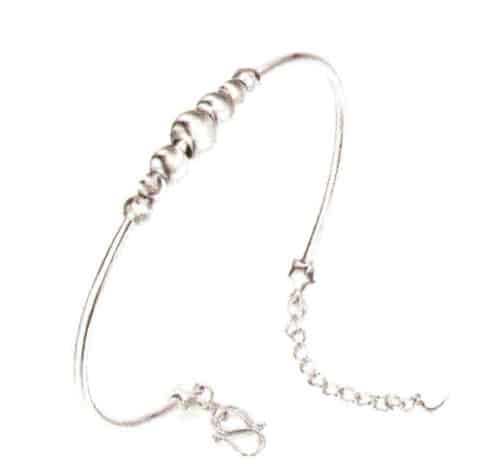
Silver bangle

Silver pendant

Silver bracelet
(4) Classification of Silver Jewelry Materials
Sterling Silver: Also known as fine silver, it contains no less than 990‰ silver content. It is generally used to make silver coins, silver ornaments, etc. Because fine silver is relatively soft, it is not suitable for gemstone settings. Adding a small amount of other metals, such as copper, to fine silver can change the color of the silver; this type of silver is called colored silver.
925 Silver: Contains no less than 925‰ silver content, also known as coin silver, marked with “Silver 925” or “S925”. To improve the hardness of the silver, other metals such as copper and nickel are usually added, making it suitable for gemstone setting. 925 silver is currently the mainstream material for jewelry on the market; it has good performance and strong luster and can be used to make jewelry and utensils.
Silver does not oxidize in the air, but it can turn black due to a chemical reaction with hydrogen sulfide in the air. We generally call silver oxidation and blackening silver sulfide formation, so the silver will also blacken when in contact with sulfur-containing items such as eggshells and rubber. Special anti-sulfide materials can be added to alleviate silver sulfide blackening, and rhodium plating on the surface of silver can also delay silver oxidation and blackening.
Plain Silver: This refers to jewelry with no plating of other metals on the surface, and it is relatively easy to oxidize in the air.
Thai Silver: Originally a type of silver material native to Thailand, with a silver content of 925‰, but the surface gloss is relatively low to achieve an aged antique effect. Compared to rhodium-plated silver jewelry, the price is lower.
Tibetan Silver: Traditional Tibetan silver has a silver content of 30%. Nowadays, most Tibetan silver on the market has very low silver content; almost none is made from white copper (copper-nickel alloy). The jewelry styles use traditional designs and craftsmanship, which are quite distinctive.
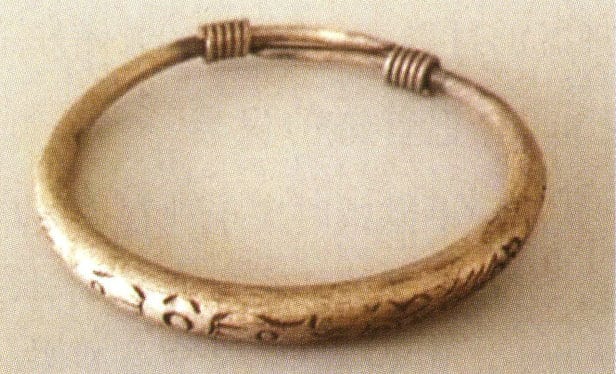
(5) Silver Jewelry Maintenance
- After removing silver jewelry, clean it before storing it in a sealed bag to prevent oxidation and tarnishing. Silver jewelry plated with white gold on the surface should be wiped with a special silver polishing cloth. Note that the polishing cloth contains maintenance ingredients and should not be washed with water.
- For silver jewelry without white gold plating, gently scrub it with toothpaste mixed with water and a soft cloth. Use a fine, soft-bristled toothbrush to clean the crevices, then rinse thoroughly with clean water. For silver jewelry sets with gemstones, avoid getting them wet as much as possible; it is best to have them cleaned by professionals to prevent loosening.
- Tarnished silver jewelry can be restored to its shine using a special silver polishing cream followed by wiping with a silver polishing cloth. Silver jewelry should be stored properly, and as much sulfur as possible should be avoided in environments containing it.
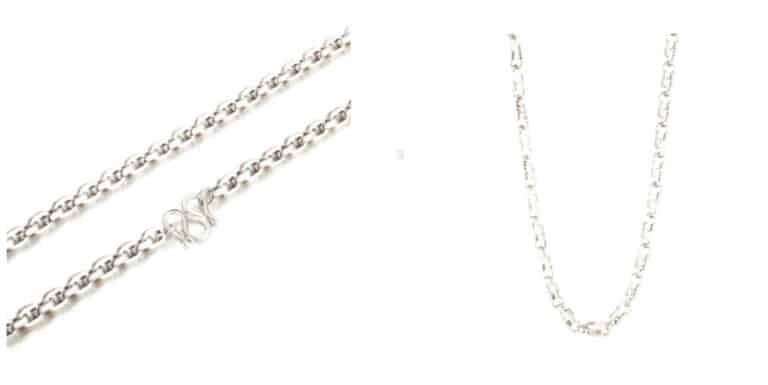
4. Palladium
(1) Basic Properties of Palladium
Palladium has stable physical and chemical properties, with an appearance similar to platinum, white in color, strong luster, high-temperature resistance, Mohs hardness of 4~4.5, harder than platinum and gold, density of 12g/cm3, lighter than platinum, highly ductile, soluble in organic acids, sulfuric acid, hydrochloric acid, and nitric acid.
Palladium jewelry is relatively wear-resistant, corrosion-resistant, has high purity, and is rare. It is an ideal material for making jewelry on its own or for setting gemstones. Palladium is white and has good luster, and jewelry made from it does not cause skin allergies.
(2) Maintenance of Palladium Jewelry
- When not wearing, it should be stored separately to avoid being scratched by high-hardness gemstones.
- Regular cleaning and maintenance are required. Professional polishing and repair should be chosen if scratches appear after long-term wear.
- Avoid contact with chemicals and bleach.
Section II Common Jade Stones
Knowledge Link
Related Background Introduction
Ancient people loved jade, comparing it to the virtues of a gentleman and the beauty of a woman, such as “a modest gentleman, gentle and smooth like jade,” “a gentleman does not part with jade without reason,” “golden branches and jade leaves,” “as beautiful as flowers and jade,” “gracefully standing like jade,” and so on. People associated jade’s gentle and reserved qualities with human character and conduct. Those who wear jade are seen as elegant and refined, gentle and steady, harmonizing and connecting with the jade. Over time, the oils from the human skin seep into the jade, and through oxidation, a patina forms on the surface, making the jade appear even more beautiful. This gave rise to the saying, “People nurture jade, and jade nurtures people.”
1. Jadeite
(1) Common Jadeite in the Market
Traditional Chinese culture often incorporates themes and elements from folk legends, myths, and religious beliefs into jewelry design, especially in jade pieces. Jadeite jewelry frequently embodies people’s hopes for a good life, such as auspiciousness, happiness, health, many children and blessings, and warding off disasters and evil spirits. The most common themes and elements in the market include the following.
Guanyin: Guanyin has a gentle temperament, and people hope she can remove violence, dispel disasters, and bring good fortune and protection to the wearer. Folk custom is that men wear Guanyin and women wear Buddha.
Buddha: People wear Buddha, hoping that Buddha can bless them, bring good fortune, and avoid harm. The homophone of Buddha is “Fu” (福), which symbolizes blessings for generations. Moreover, the Buddha’s figure is usually depicted with a smiling face, free of worries. People believe that Buddha can protect their health and happiness and bless their family and descendants. In addition, the image of Buddha’s big belly symbolizes generosity, implying tolerance, openness, and optimism.
Peace Buckle: Also known as Huai Gu or Arhat’s Eye, it can ward off evil and disasters, ensuring safety. The shape of the Peace Buckle originates from the ancient jade bi. The jade bi was initially a ritual object used to worship heaven, but it later developed into an ornament, thus carrying the connotation of praying to heaven for blessings.
Bracelet: A bracelet is a circular ornament worn on the wrist, commonly found in the following three types.
- Blessing Bracelet. Also called the round bar bracelet. The inner circle is round, the outer circle is round, and the cross-section is circular—classic, solemn, grand, and gentle. The blessing bracelet is smooth and full, with the outer, inner, and ring circles forming a unity of three circles, symbolizing completeness in career, family, and life.
- Imperial Concubine Bracelet. The inner and outer circles are flat and round, with a cross-section that is bow-shaped or circular. It is a flattering term for thick round bracelets shaped to fit the wrist, making it more comfortable to wear.
- Safety Bracelet. Also called a flat-mouth bracelet. The inner circle is round, the outer circle is round, and the cross-section varies between bow-shaped or semicircular. The inner circle is polished flat. 90% bracelets are all safety bracelets on the market.
(2) Selection and Terminology of Jadeite
Color: Besides green, jadeite comes in colorless, yellow, red, purple, black, and other colors. When evaluating jadeite, color is an important factor. Single-color jadeite, vivid imperial green, rich purple, and bright red are all high-grade varieties, with green being the most expensive. The green of jadeite is best when it is dense, bright, lively, pure, and harmonious. The best green varieties include gem, glass, bright, and seedling green. Others include gray-green, toad green, oily blue-green, ink green, blue-green, melon rind green, Spinach green, blue water green, bean green, parrot green, spring onion green, and vivid yellow green.
Clarity: The transparency of jadeite. The better the clarity, the higher the transparency, the better the quality, and the more expensive the price. The transparency of jadeite is related not only to its quality but also to its thickness. In the jewelry market, dyed materials such as maw sit, and quartz-like jade imitate jadeite.
Base color: The base color of jadeite should be fine, even, clean, and harmoniously consistent with the whole to be considered good quality. The best jadeite base colors are glassy and egg-white types.
(3) Care of Jadeite
The key points for caring for jadeite jewelry are as follows.
- Avoid exposure to strong sunlight and high temperatures: Jadeite easily loses moisture and becomes dry, affecting its luster. Once jadeite loses moisture, it isn’t easy to restore.
- Avoid contact with oil fumes, cosmetics, disinfectants, and other chemicals: Oil fumes can affect the luster of jadeite, and chemicals can corrode its surface. If accidentally exposed to these substances, clean it with a neutral detergent, then wipe it dry with a soft cloth.
- Avoid impacts, friction, and dropping: Some parts of carved jadeite jewelry are relatively thin and can easily develop cracks or even break upon impact, causing irreparable damage, so special care is needed.
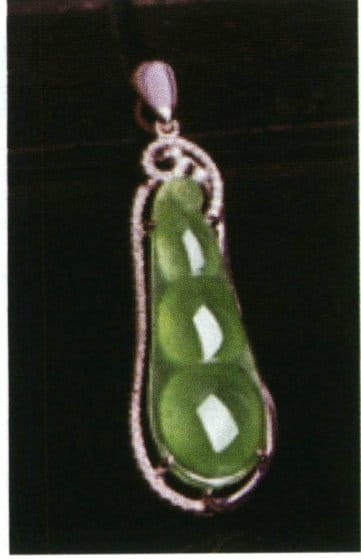
Jadeite Bean Pod Pendant

Jadeite Blessing Melon Charm
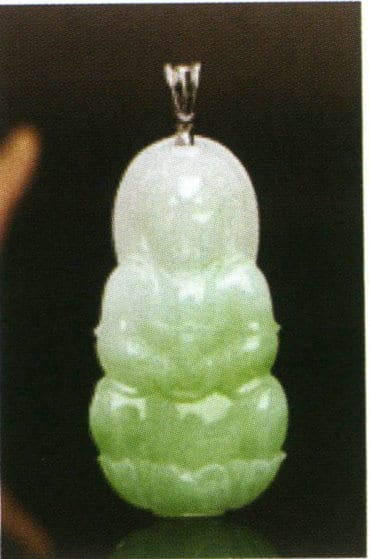
Jadeite Guanyin Bodhisattva Statue
2. Hetian Jade
(1) Overview
Hetian jade has a congealed fat, warm, and restrained color, blending harmoniously with the traditional Chinese symbolism of gentle yet strong femininity. Although nephrite jade is found in many places worldwide, the highest quality comes from the Hetian region of Xinjiang, China. Hence, it is called Hetian jade. Hetian jade has a long history in China, dating back to the Neolithic era. Many Hetian jade ornaments, ceremonial and funerary items, and vessels have been unearthed at the Liangzhu culture and Hemudu sites.
Introduction to Hetian Jade
| Colour | Egenskaper | Legend |
|---|---|---|
| White Jade | White nephrite, of which the best is sheepskin white (like congealed grease), is unique to Hetian jade. The quantity of white nephrite is very small and its value is very high. Most of the Hetian white jade is general white jade, but white jade should be white and warm, if white but not moist, it is dead white, not the best jade. |
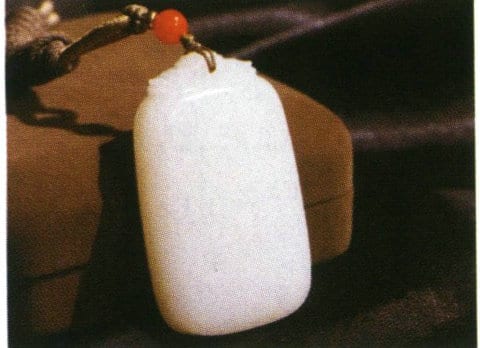
|
| White jade | A soft jade that lies between white jade and green jade, resembling white but not white, and resembling green but not green. This name was used by the ancients. |

|
| Greenish white jade | Traditionally, green jade is dark green with grey or green with black, and is the hardest of the nephrite, but not as beautiful in colour as white jade, and of lower value than white jade. |

|
| Jasper | Green to dark green nephrite, sometimes black spots can be seen, its green parrot green, pine green, ginkgo nut green. Good jasper colour like jade, ancient women often jasper for headdress, ‘jasper hairpin’ story is an example. |
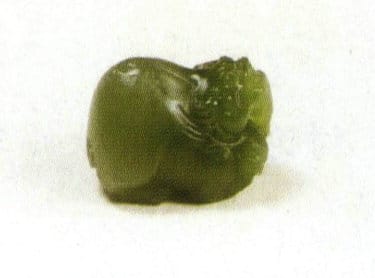
|
| Topas | Pale yellow, sweet yellow to yellow flashing green nephrite, also known as beeswax yellow, chestnut yellow, okra yellow, yellow flower yellow, egg yellow, beige yellow, yellow poplar yellow, etc., rare for the steamed corn yellow, beeswax yellow. Topaz is generally lighter in colour, bright yellow, and extremely rare in its richness. High-quality topaz is not inferior to white goat's fat, but it is not the ‘yellow jade’ or ‘topaz crystal’ of gemstones. |

|
| Nefrit | It is grey to black, coloured by graphite, with no less than 30% black, and its luster is duller than that of other jades. Its black distribution is either dotted, cloudy or pure black, with names such as dark cloud flake, light ink, golden sable beard, lady's sideburns, pure lacquer black, etc., mixed with green or even white, of which the black of nephrite is caused by microscopic scale-like graphite. |

|
| Sugar Jade | Blood-red, red-sugar-red, purple-red, and maroon nephrite, of which blood-red sugar-red nephrite is the best, is mostly subordinate to white and green nephrite. |
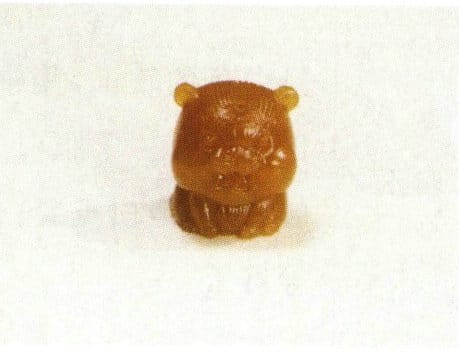
|
| Emerald Green Jade | Part or the whole of the colour tone is light green or emerald green, the percentage of green part is not less than 5%, common green and white, green and white and smoky green and other colour combinations. |

|
(2) Care of Hetian Jade
- Hetian jade should be kept away from direct sunlight and high temperatures, as such environments can cause dehydration and affect its luster.
- Avoid dust and sweat stains. Clean the surface with warm water or a professional cleaning agent using a soft brush if the surface gets dirty. Do not soak it or use ultrasonic cleaning.
- Avoid collisions. Although Hetian jade is tough, impacts can cause invisible internal cracks that significantly diminish its beauty and value.
- You can clean it with warm water or detergent, gently brushing the surface of the jewelry with a soft brush, but do not soak it in a cleaning solution, which is unsuitable for cleaning in an ultrasonic machine.
Section III Common Gemstones
1. Diamonds
(1) The Origin of Diamonds
The English word “diamond” is derived from the Greek word “adamas,” meaning hard and untamable. Known as the “king of gemstones,” the diamond is recognized worldwide as the most precious gemstone and one of the most beloved. In Western countries, diamonds initially symbolized power and status, later representing love and marriage. Today, diamonds have become a popular gemstone that is accessible and wearable by the general public.
“A diamond is forever; a single water drop lasts forever.” This classic slogan deeply resonates with people, changing the traditional Chinese wedding custom of wearing gold and jade and forming a new concept among Chinese newlyweds: “No diamond, no marriage.” Diamond rings have become an essential item for modern weddings.

Hope Blue Diamond

Cullinan No. 1
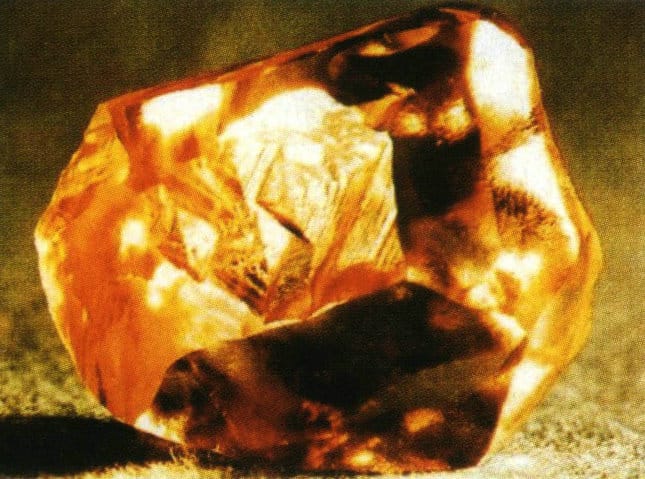
Changlin Diamond (the largest natural diamond currently in China)
According to rough estimates, to obtain a one ct finished diamond, 250 tons of ore must be mined from the deposit. After the mined ore is screened, each rough stone requires meticulous analysis and design to ensure its quality, clarity, and style, maximizing its economic value before cutting and polishing. This demands that professionals have extensive experience and a thorough understanding of diamonds’ physical and optical properties. For example, the world’s largest diamond, the Cullinan, originally weighed 3106ct. Experienced craftsmen spent 8 months designing and cutting it into nine large diamonds and 96 smaller ones. Some world-famous diamonds have even taken craftsmen several years to design and process.
In the market, most diamonds range in color from nearly colorless to light yellow, with some being colored diamonds such as yellow, green, blue, brown, and pink, as well as orange, red, black, purple, and others. These colored diamonds are rare among diamonds among which the red diamonds are the most precious, and yellow diamonds are more common in the market than colored diamonds. Large-carat pink, yellow-blue, and green diamonds are rare in the market and can occasionally be seen at auction.

A Soviet mine rich in diamond deposits

Rough diamonds
(2) Diamond Grading
The quality of a diamond can be evaluated using the 4C standard, which includes Carat, Clarity, Color, and Cut. Carat measures the weight. Clarity refers to the location and amount of inclusions within the diamond; higher clarity grades mean fewer flaws. Color refers to the diamond’s color grade; the whiter the color, the easier light passes through, making the diamond appear brighter.


High-Quality Cut
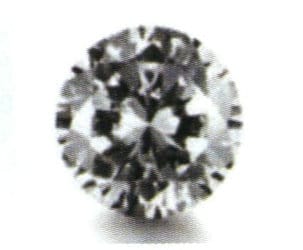
Ordinary Cut

Poor Cut
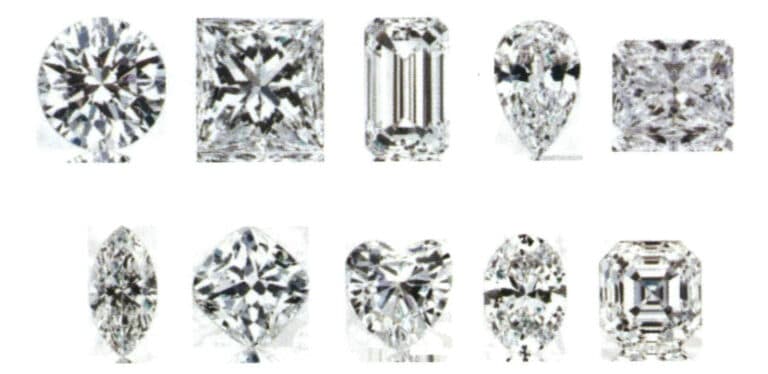
(3) Diamond Care
- Diamond jewelry should be stored separately from other gemstones. Because diamonds are the hardest, they can easily scratch and damage other materials.
- Regularly clean and maintain diamond jewelry. Diamonds are oleophilic and hydrophobic, so oils from the body can easily accumulate on the surface, making it cloudy and affecting the diamond’s brilliance. Regular cleaning and maintenance keep the diamond sparkling and allow for checking if the diamond is loose, preventing it from falling out.
- Avoid collisions. Although diamonds are the hardest gemstones, they can still be damaged by impact, seriously affecting their value and appearance.
Copywrite @ Sobling.smycken - Anpassad smyckestillverkare, OEM och ODM smyckesfabrik
2. Ruby
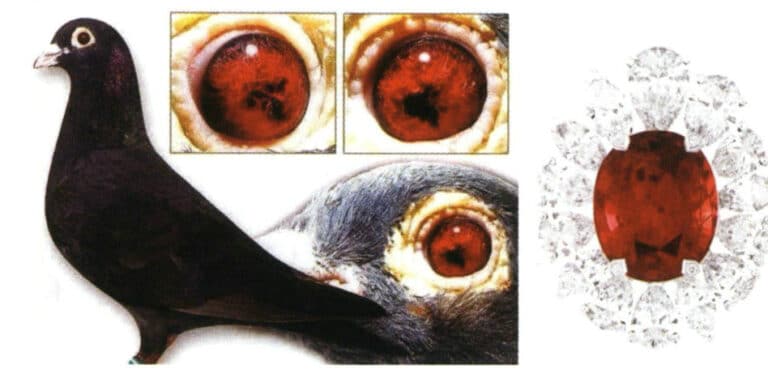
The hardness of rubies is second only to diamonds, which is one of the reasons they are so beloved. In 1936, Edward VIII gave Wallis Simpson a ruby necklace as a 40th birthday gift; their love, enduring storms, and criticism shone as brilliantly as the color of the ruby.
The formation conditions for rubies are quite demanding, and mining conditions are very harsh. From 400 tons of rough stone, only about 1 carat of rough ruby material can be extracted, and from 1 kilogram of rough material, only 1 carat of gemstone-grade ruby can be obtained.
The quality grading of rubies is not as standardized or strict as that of diamonds. The market mainly classifies them based on color, transparency, clarity, cut, and quality. The best color is a bright, pure red. “Pigeon blood red” is a type of red resembling a pigeon’s eye—vivid and pure, without any other hues. Many rubies tend toward orange or purple tones, and some vary in brightness, such as light pink or dark red, all of which reduce the ruby’s value.
Common cuts for rubies include oval and round shapes, and the cut is also very important for rubies. A good cut makes the ruby more beautiful and enhances its brightness, even creating a sparkling effect on the surface, making the ruby shine brilliantly and appear more charming.
Because large rubies are relatively rare, the quality of rubies has the most significant impact on their price. Rubies of 1 ct are already scarce, 3ct are rare, and 5ct are difficult to find on the market.
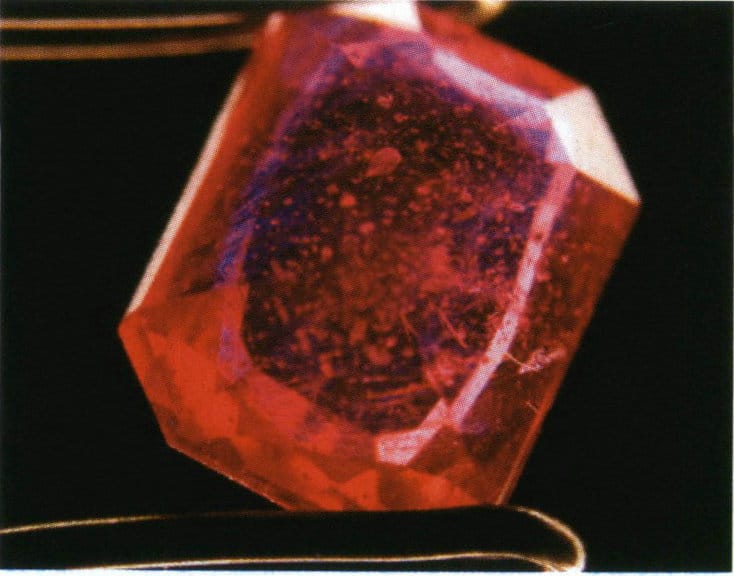
Faceted Ruby
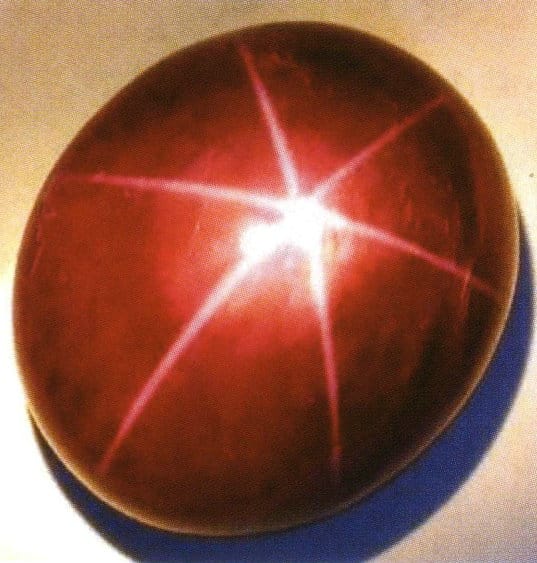
Star Ruby
3. Sapphire
The English word sapphire is derived from the Latin word spins, meaning blue. Both sapphire and ruby belong to the corundum family, sharing the same chemical composition and physicochemical properties; the color difference is due to trace elements in the gemstones. Sapphire refers to all gem-quality corundum except for the red variety; yellow, blue, green, purple, and colorless stones are all sapphires.
Sapphire resources are more abundant, widely distributed, and have a higher output than rubies. Sapphires of the same quality are priced lower than rubies. Sapphire is the birthstone for September, symbolizing loyalty, steadfastness, kindness, and honesty, and is known as the “sister gemstone” to Ruby.
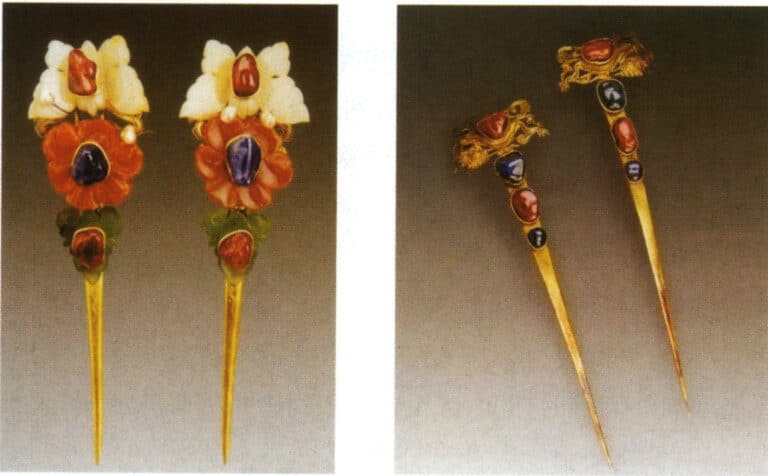
In Eastern culture or the Western world, sapphire has always been revered as the “stone of emperors.”
There are many varieties of sapphire, but blue is the mainstream color. Among them, the most famous are cornflower blue and royal blue.
Cornflower blue is synonymous with the top-grade Kashmir sapphire color. Cornflower blue sapphires come from the Kashmir region, an exceptionally beautiful color close to Germany’s national flower, the cornflower. They have a velvety texture, smooth and silky, with a beautiful color, superior quality, scarce production, and high price. Cornflower blue sapphires have always been regarded as the finest among sapphires and are an extremely precious variety.

Cornflower blue sapphire
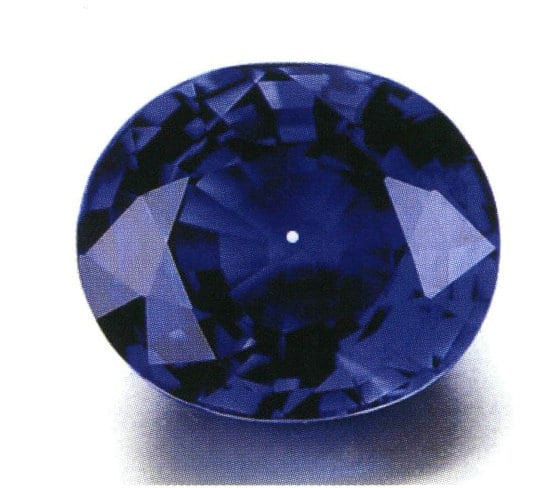
Royal blue sapphire
Royal blue sapphires are the aristocrats among sapphires. Compared to cornflower blue sapphires, royal blue sapphires are much more composed. Royal blue sapphires are understated and innerly refined yet inherently possess an indelible noble temperament. Their color is a vivid deep blue with a purplish hue, rich and profound. Their yield is higher than cornflower blue sapphires, making them more commonly seen in the market.
In addition, pink-orange sapphires have also attracted attention. This type of sapphire is called Padparadscha, also known as Padma sapphire. Its unique pink-orange color resembles the lotus flower in Buddhist countries. It is mainly produced in Sri Lanka, with a low yield and limited exports, so its price is very high. Currently, high-quality Padparadscha commands the highest price among sapphires.

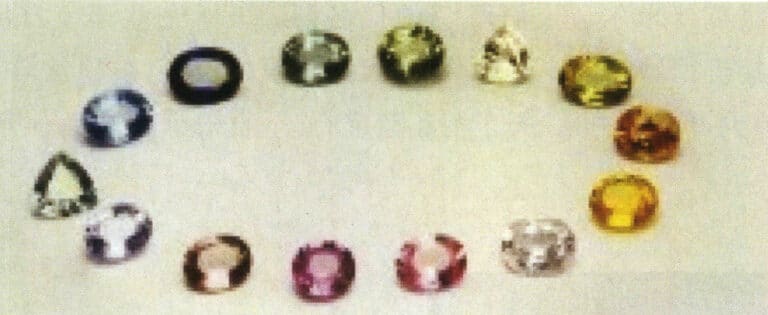
Rubies and sapphires belong to the corundum mineral family, sharing many properties with diamonds, and their care methods are also similar to those of diamonds.
- Ruby and sapphire jewelry should be stored separately from other jewelry. Diamonds can scratch rubies, sapphires, and softer gemstones, as their hardness is second only to diamonds.
- Avoid collisions. Because rubies and sapphires have well-developed cleavage, they can easily crack or break upon impact.
- Regular cleaning and maintenance. Oils easily contaminate rubies and sapphires after long-term wear. They can be cleaned with a professional cleaner and then wiped dry with a soft cloth.
4. Tourmaline

The main sources of tourmaline are Brazil, Sri Lanka, the United States, Russia, Myanmar, Kenya, and others. The world’s 50%~70% colored tourmaline comes from Brazil.
The quality of tourmaline is related to its color, clarity, cut, and size. Color is the most important factor in evaluating tourmaline, but tourmaline comes in a wide variety of colors, almost every color, including some gradient and transitional colors. Bicolor and multicolor tourmalines are commonly seen in the market, among which the green outside and red inside variety is also called watermelon tourmaline, which is very special. Common colors of tourmaline include red tones (pink, peach red, purplish red, etc.), green tones (dark green, blue-green, yellow-green, etc.), and yellow (lemon yellow, orange-yellow, brownish yellow, etc.). The most common are red and green. The red tourmaline’s color is close to ruby’s and is more popular in the market. Therefore, red rose, red, and purplish red tourmalines are priced higher, while green tourmalines of the same quality are much cheaper.
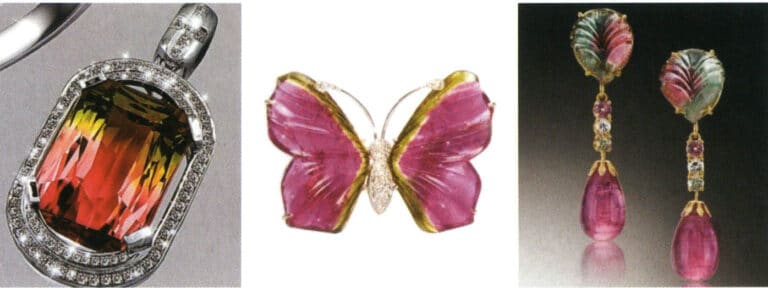
Paraiba is the most precious among tourmalines, known as the King of Tourmalines. It was discovered in Brazil in 1989 and usually appears in blue or blue-green hues, colored by copper ions. This type of tourmaline is rare, and its price has increased hundreds of times over the past 20 years. Today, high-quality Paraiba tourmaline commands a price of around $20,000 per carat, with top-tier prices exceeding $60,000/ct.
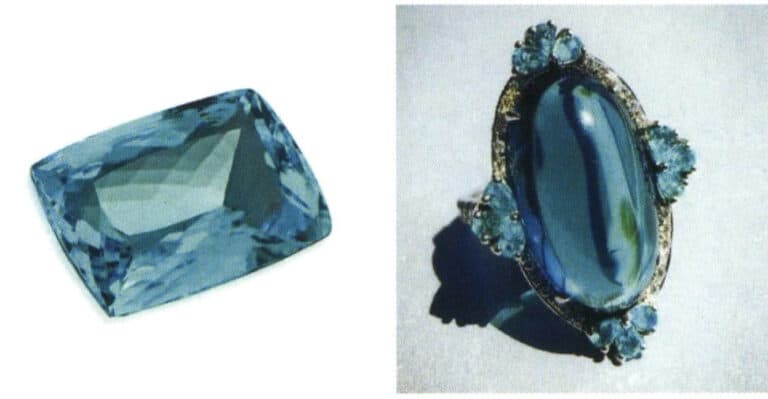
Paraiba tourmaline
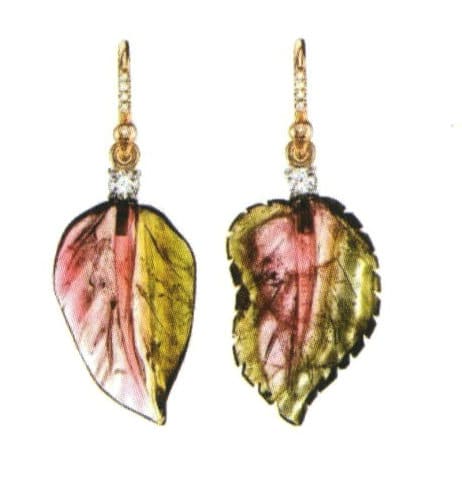
Bicolor Tourmaline

High-quality tourmaline
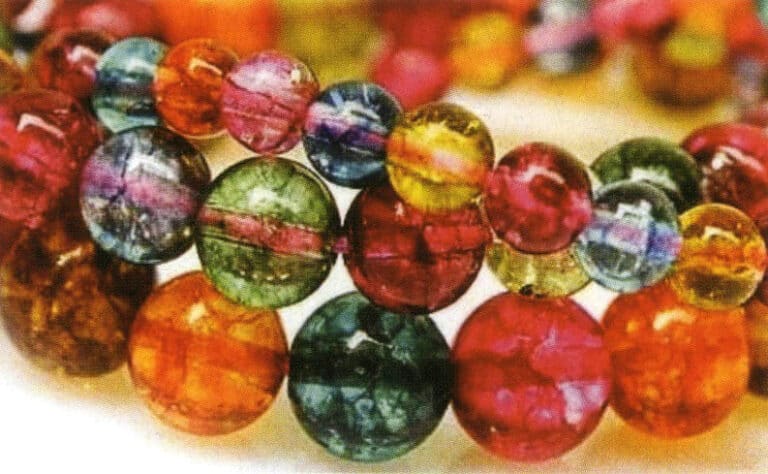
Tourmaline with many fissures and filled with colored resin
Section IV Common Organic Gemstones
1. Pärlor

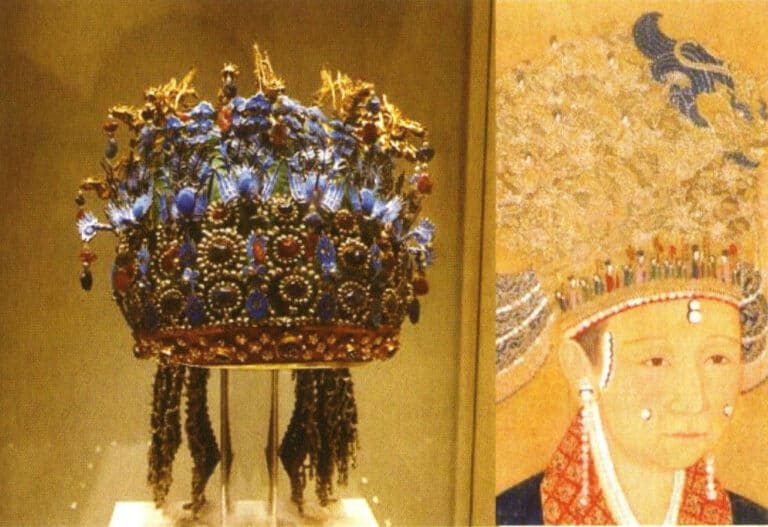
Knowledge Link
China is one of the earliest countries in the world to use pearls. More than four thousand years ago, the “Shangshu Yugong” recorded that river clams produced pearls. Ancient texts such as the “Book of Songs,” “Classic of Mountains and Seas,” and “I Ching” also contain references to pearls. Pearls are the birthstone for June and the anniversary stone for the 30th wedding anniversary. Pearls symbolize wealth, fulfillment, happiness, and nobility.
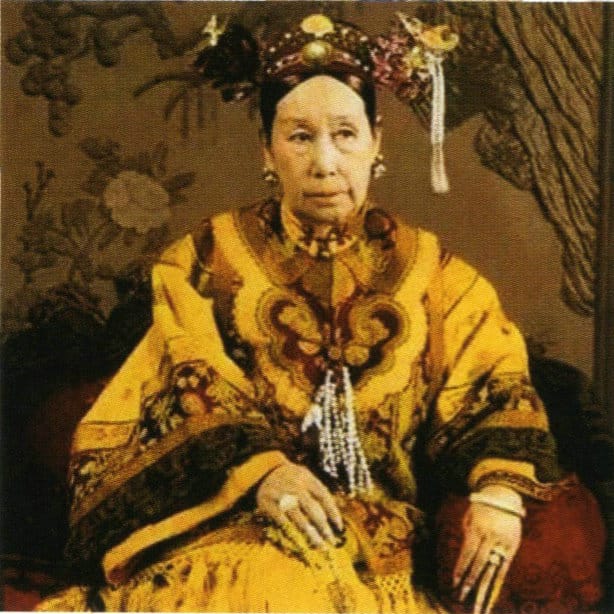
Empress Dowager Cixi

Elizabeth I
According to different growth methods, pearls are divided into natural and cultured pearls. More than 90% pearls on the market are cultured, while natural pearls are rare. According to the growth waters, pearls are divided into seawater and freshwater. Seawater pearls are subdivided into South Sea pearls, Tahitian pearls, Chinese seawater pearls, and Japanese seawater pearls. Of the world’s seawater, 95% pearls come from China.
The quality factors of pearls include six aspects: color, size, shape (roundness), luster, surface smoothness, and nacre thickness.
The color composition of pearls consists of body color, overtone, and orientation. The body color is the most basic and dominant color of the pearl. The overtone is the accompanying color that appears on top of the body color, floating on the pearl’s surface, sometimes one or multiple colors, which overlay the body color to enhance its beauty. The orient is the rainbow-like colors formed on the surface by diffraction and refraction of the pearl layers, similar to soap bubbles, but not all pearls have oriented. For example, Akoya pearls have less orientation, while Tahitian black pearls have a strong orientation. The main colors include the white series (pure white, creamy white, silver white, etc.), red series (pink, light rose, light purplish red, etc.), yellow series (golden yellow, beige, etc.), black series (black, green-black, blue-black, gray-black, purple-black, etc.), and other colors (purple, green, bronze, etc.).
The size of a pearl is generally evaluated by its diameter, which greatly affects the price. The larger the diameter, the more difficult it is to form. The larger the diameter, the higher the price of the pearl.


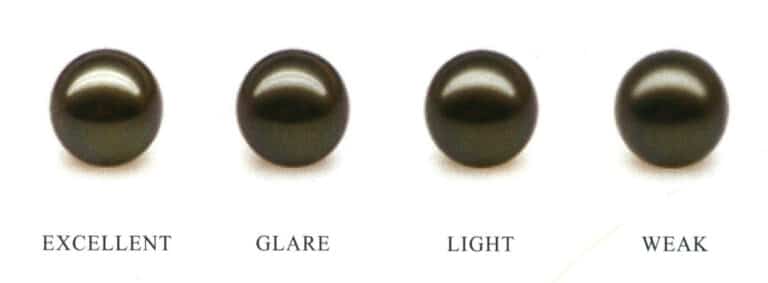
The surface cleanliness of pearls also affects their value. During pearl growth, the surface often has spots, pits, sand holes, striations, wrinkles, etc., all of which affect cleanliness. Based on the location, size, and quantity of these blemishes, cleanliness is divided into five grades: No Blemish A (surface appears smooth and delicate to the naked eye, with blemishes extremely difficult to observe), Slight Blemish B (very few blemishes, like pinpoints, difficult to see with the naked eye), Small Blemish C (small blemishes easily seen with the naked eye), Blemish D (blemishes obvious, occupying less than of the surface area), Heavy Blemish E (blemishes very obvious, seriously occupying more than the surface area).

Pearls are calcium carbonate-containing organic matter with low hardness, easily worn and scratched, and not resistant to acids or alkalis. If not properly cared for, they easily lose their luster over time. The saying “people age, pearls yellow” refers to pearls that have been improperly preserved.
- Regular Maintenance. Strung pearl necklaces or bracelets must be restrung every few years to ensure durability. Pearls also require regular care to prevent improper storage from affecting their appearance.
- Avoid Exposure to Sunlight and High Temperatures. Pearls can lose moisture and become dry and cracked, damaging the surface and losing their luster.
- Store Separately. Pearls have a low hardness, with a Mohs hardness of only 3.5~4.5, making them easily scratched or scuffed. Once the surface is damaged, it isn’t easy to restore, so it should not be stored together with other jewelry.
- Avoid contact with water, cosmetics, cleaning liquids, kitchen fumes, etc. Because pearls are organic, with calcium carbonate as the main component, they are prone to chemical reactions. If worn in summer, pay attention to the effects of sweat and clean and maintain them more frequently.
2. Amber
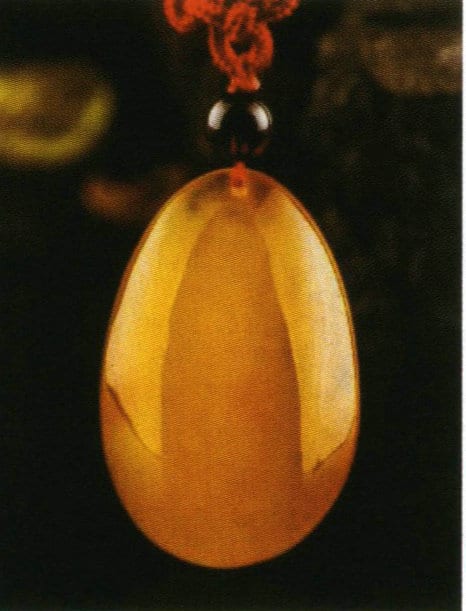
Bärnsten
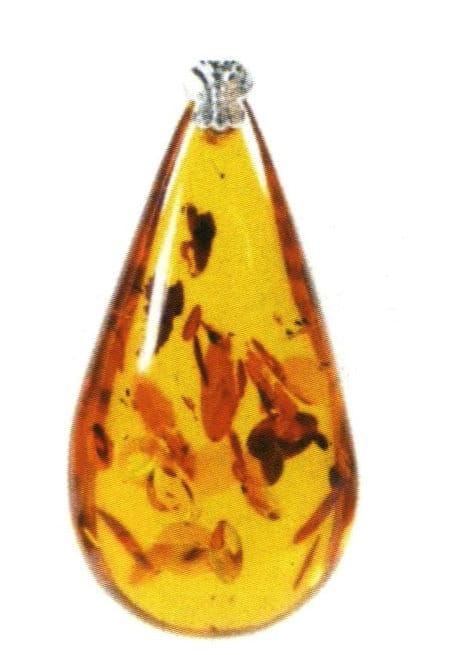
Amber with Plant Debris
In Europe, amber has a long cultural history. In early times, amber was associated with rituals and sun worship. People believed that amber was formed from the sun over the sea, filled with power, and regarded as a talisman that could ward off evil, bring blessings and good luck, and symbolize happiness and longevity.
The formation of amber occurs in three stages: first, the resin is secreted from pine and cypress trees; second, the resin is deeply buried and undergoes fossilization, during which its chemical composition, structure, and characteristics change; third, the fossilized resin is shaped into amber through processes of erosion, transport, deposition, and diagenesis (Liao Renqing, 2014).
Most amber on the market comes from the Baltic coast and Myanmar, with some also originating from the United States, Canada, Japan, Romania, Italy, and other countries. In China, amber is also found in places such as Fushun in Liaoning, Henan, and Yunnan.
Amber has low hardness and density and ranges from transparent to translucent with a resinous luster. It is classified by color into blood amber, golden amber, green amber, and blue amber; by transparency into amber and beeswax, where the transparent type is amber, and the opaque type is beeswax. In addition, the market also features cherry amber, insect-inclusion amber, dendritic amber, etc., each with different colors and unique inclusions.
Beeswax is very popular in China, often accompanied by the saying “thousand-year amber, ten-thousand-year beeswax,” but amber and beeswax form around the same time, though their chemical compositions differ. Newly mined beeswax with light yellow and yellow colors is called new beeswax, while the deep brown color formed after polishing and oxidation of new beeswax is called old beeswax.

Bivax
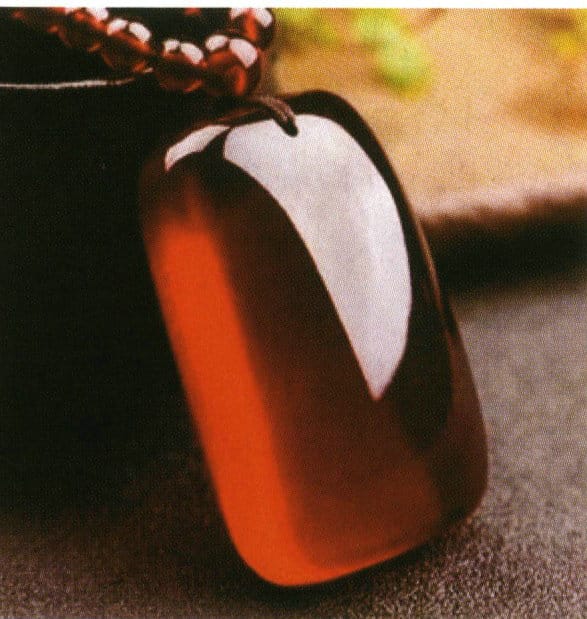
Cherry amber
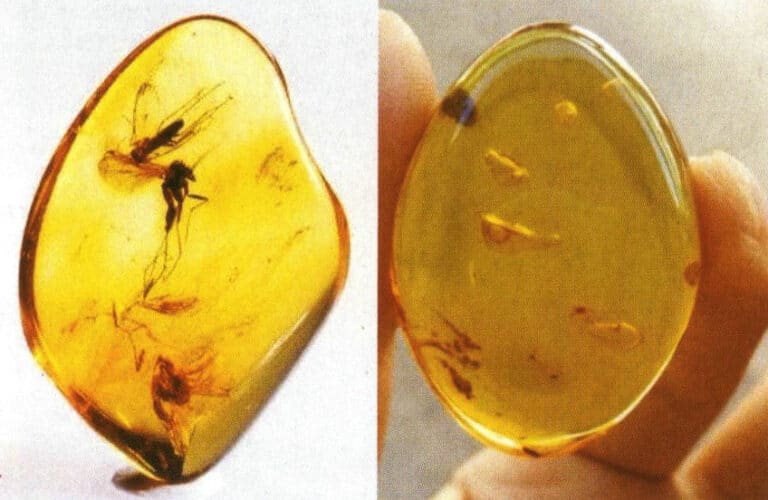
Insect-inclusion amber
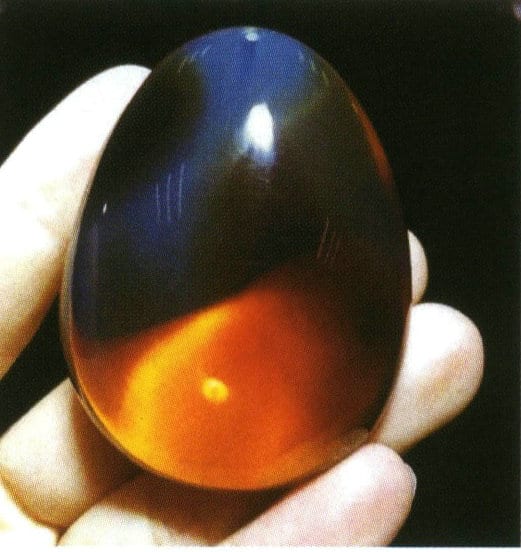
Blue amber
The origin of amber greatly affects its price. Amber from Fushun, China, is priced higher than Baltic amber and Dominican blue amber is priced higher than Myanmar amber. There are many methods in the market for enhancing amber; some use rosin and copal resin to counterfeit amber. When purchasing, one should buy through official channels and check certificates.
- Store separately. Amber has a relatively low hardness and can easily be scratched or scuffed when placed together with harder materials such as metal, diamonds, rubies, and sapphires, so it should be stored separately to avoid damage.
- Avoid exposure to strong sunlight and high temperatures. Amber is an organic gemstone; high temperatures can cause it to lose moisture, reduce its luster, and even cause surface cracking.
- Avoid contact with perfume, cooking fumes, cleaning agents, and disinfectants. These substances can cause damage to amber, so care must be taken during daily activities.
- When cleaning amber, use warm water and dry it with a soft cloth. Apply a small amount of olive oil to restore its luster.





